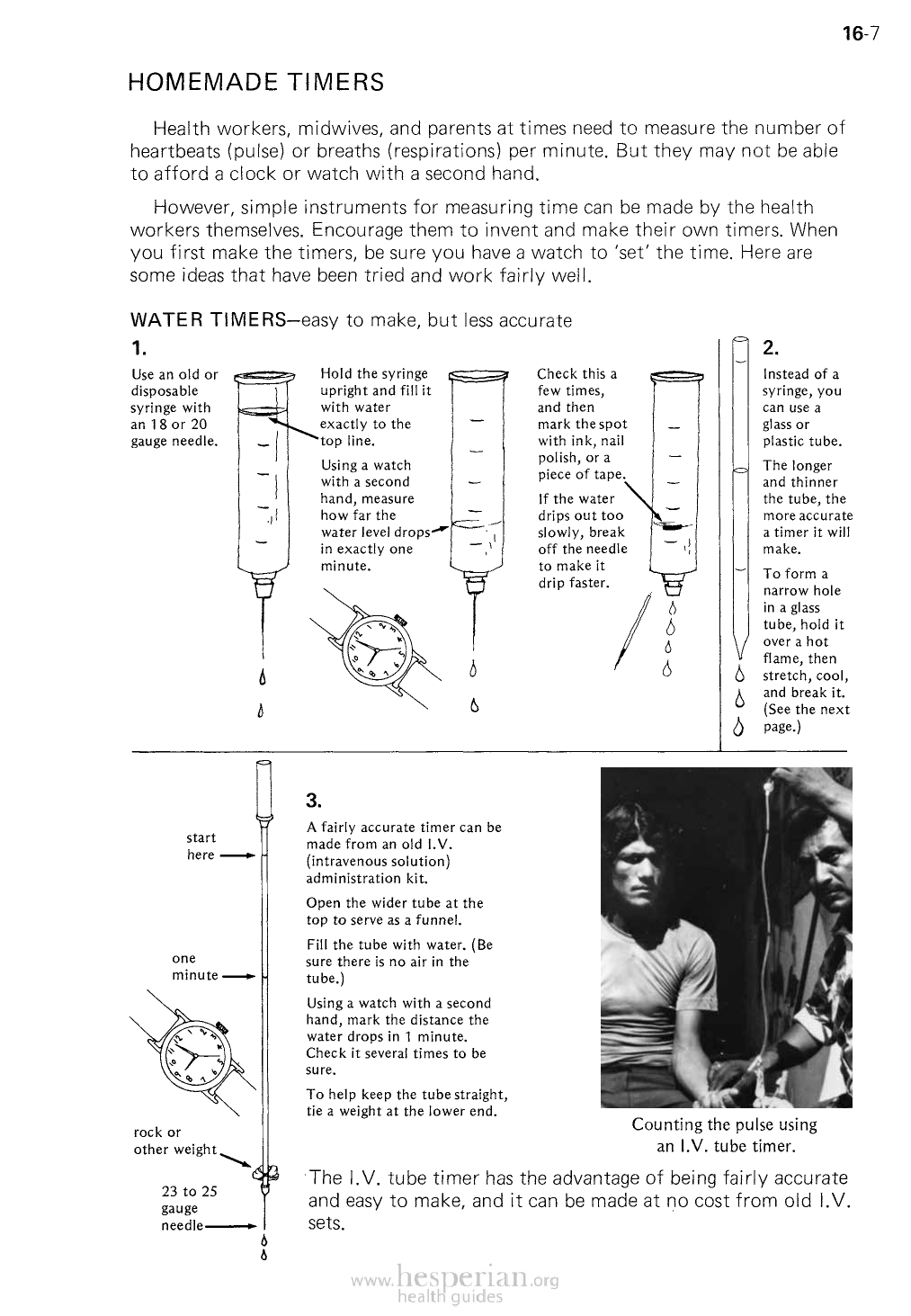
16-7
HOMEMADE TIMERS
Health workers, midwives, and parents at times need to measure the number of
heartbeats (pulse) or breaths (respirations) per minute. But they may not be able to
afford a clock or watch with a second hand.
However, simple instruments for measuring time can be made by the health
workers themselves. Encourage them to invent and make their own timers. When
you first make the timers, be sure you have a watch to ‘set’ the time. Here are
some ideas that have been tried and work fairly well.
WATER TIMERS-easy to make, but less accurate
1.
Use and old
or disposable
syringe with
an 18 or 20
gauge needle
Hold the syringe
upright and fill
it with water
exactly to the
top line.
Using a watchf
with a second
hand, measure
how far the
water level drops
in exactly one
minute.
Cfheck this a
few times,
and then
mark the spot
with ink, nail
polish, or a
piece of tape.
If the water
drips out too
slowly, break
off the needle
to make it drip
faster.
2.
Instead of
a syringe,
you can use
a glass or
plastic tube.
The longer
and thinner
the tube, the
more accurate
a timer it will
make.
To form a
narrow hole
in a glass
tube, hold
it over a hot
flame, then
stretch, cool,
and break it.
(See the next
page.)
start
here
one
minute
rock or
other weight
23 to 25
gauge
needle
3.
A fairly accurate timer
can be made from an old
I.V. (intravenous solution)
administration kit.
Open the wider tube at the
top to serve as a funnel.
Fill the tube with water. (Be
sure there is no air in the
tube.)
Using a watch with a
second hand, mark the
distance the water drops in
1 minute. Check it several
times to be sure.
To help keep the tube
straight, tie a weigth at the
lower end.
Counting the pulse using an
I.V. tube timer.
The I.V. tube timer has the advantage of being fairly accurate and easy to
make, and it can be made at no cost from old I.V. sets.